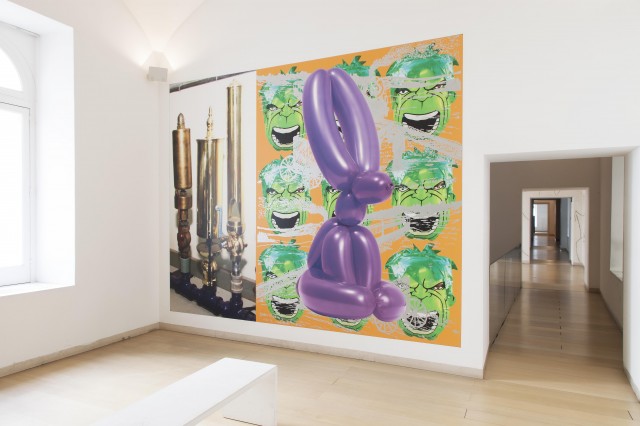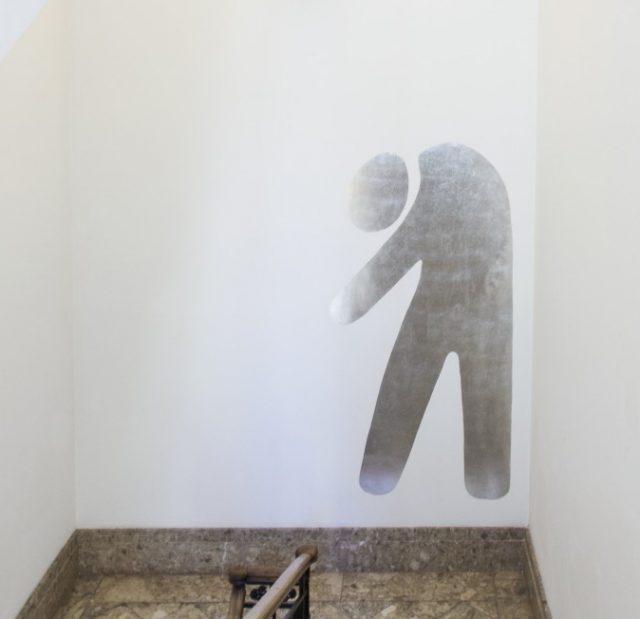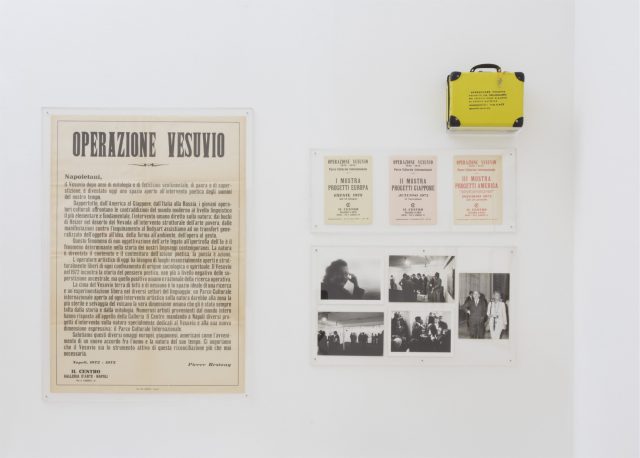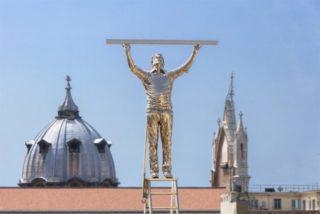Alighiero Boetti was originally a member of the Arte Povera movement. Among the movement’s other foundational exhibitions, he participated in group events in Turin, Milan and Genoa, and the third International Exhibition of the Figurative Arts in Amalfi in autumn 1968. From the mid-sixties on Boetti worked independently of the spirit of Arte Povera, developing a personal and stratified artistic practice that used a wide range of media to explore concepts such as mass production (in the combination of repetition/variation), collaboration (with a particular concern for the possible multiplicity of identity, going so far as to call himself “Alighiero and Boetti”), and the dynamics of knowledge arising from the operation or modification of the rules governing
all forms of communication. Blurring the distinctions between different fields, such as geography, geometry, mathematics, philosophy, literature and politics, and using basic materials, such as drawing on squared paper, or traditional techniques such as weaving, tracing and writing, Boetti moved beyond the usual distinction between the avant-garde and tradition, as between art and other forms of knowledge. By constantly acting on his motto of “giving birth to the world,” his works were configured as applied, integrated and shared forms of knowledge of the world and the mechanisms of human thought. In the mid-sixties, in addition to using industrial materials such as asbestos cement, masonite and plexiglas, or natural materials, such as chalk, combined with basic actions such as filling or occupying spaces, Boetti created a series of ink drawings on paper in which challenged the division between two- and three- dimensional works, reproducing industrial objects used for making recordings (microphones, cameras, movie cameras). In 1970 he completed the Viaggi postali (Dossier postale) series begun the year before, the first postal work in which the stamps were affixed to the envelopes in accordance with all possible combinations and permutations (“I used stamps for their colors as an artist uses a brush or crayons”).
In 1971 Boetti made his first trip to Afghanistan, returning regularly until 1979 (sometimes in the company of the artist Francesco Clemente). There he created various works, including his first embroideries on fabric and his Mappe, maps of the world in which individual nations were represented using the colors and symbols of their flags. (Over the course of time this work documented the incongruence between the stable form of the world and the changes in human geopolitics.) The embroidery was often delegated to Afghan women. In Kabul Boetti also opened a guest house called One Hotel in the residential district of Sharanaw, which he co-managed with Dastaghir Gholam. In the eighties, finally, he was forced to leave Afghanistan and celebrated it with a work in which his two hands are engaged in drawing a double line (up/down, left/right) which converges in a multifaceted portrait of the silhouette of Afghanistan. The work adopts the serigraphic technique which recurs in many other works from this period. In 1972 Boetti also began the series of works in biro and the embroideries in which single words and phrases (in Italian or Afghan languages) are framed in an attempt at an open and provisional systematization of language, as in the series titled Ordine e disordine.
Some of the works described have become part of the museum’s collection, selected by the artist Mario Garcia Torres on the occasion of his exhibition, “The Lesson of Boetti (Searching for One Hotel, Kabul).” One of these works opens the circuit of the collection, AW:AB=L:MD. As often with Boetti’s works, the title is a paradoxical and tautological play on language which explains the one and multiple content of the work itself: by superimposing the serial iconography of Warhol’s Jackie Kennedy on the mustache that Marcel Duchamp stuck on the supreme artistic icon, Leonardo’s Mona Lisa, he delineated the multiple identity of that inexhaustible explorer of the world, art and humanity (just as they are), of that artist always (at least) double, and then perennially performative, that was Alighiero (and) Boetti.
AV




